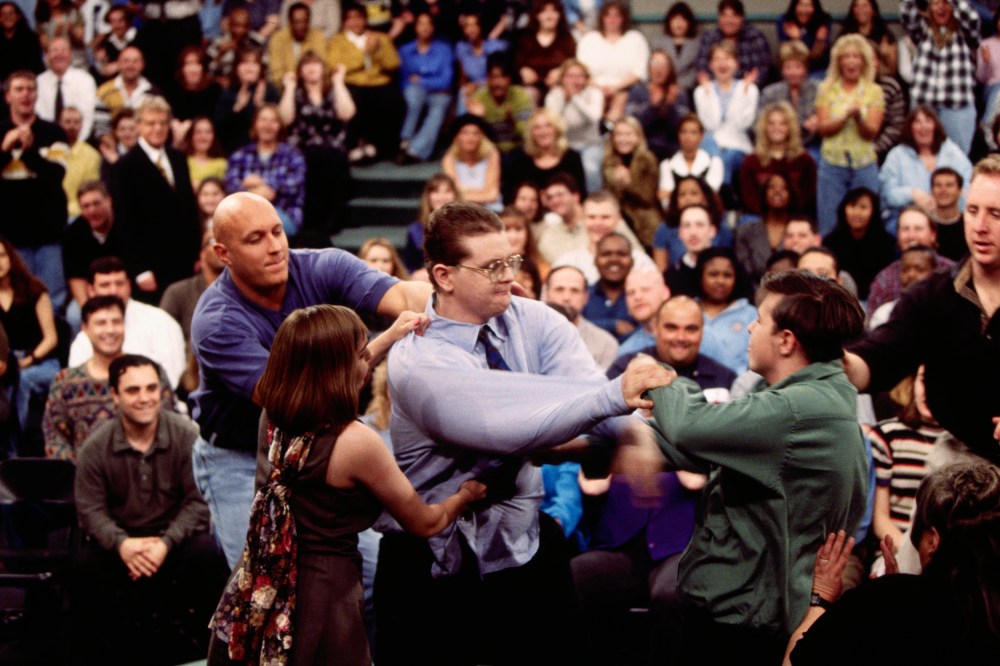Jerry Springer, who died from cancer Thursday at age 79, didn’t invent the sort of salacious spectacle he would become infamous for as longtime host of “The Jerry Springer Show.” But, as he expertly directed the show that aired five days a week for nearly 30 years, he became the most recognizable face of the genre. With his audience gleefully cheering on the trademark fights between his guests — chanting “Jer-ry! Jer-ry! Jer-ry!” — the bespectacled, well-dressed Springer presented himself as a sober presence in the rowdy crowd, ostensibly pleading for calm.
The bespectacled Springer presented himself as a sober presence, ostensibly pleading for calm.
But his show caused harm: both to the people he invited on to be mocked and exposed, and to the often-marginalized groups they identified with. His show even contributed to the increasingly coarse way we talk to and about one another. Though Springer expressed some reservations about his show’s legacy, it’s not clear he ever truly appreciated just how destructive it was, especially to younger viewers soaking it all in.
For a long time, daytime television had been the purview of melodramatic soap operas, game shows and talk shows, such as Phil Donahue’s, geared toward a discussion of politics and self-help. The Jerry Springer Show had political content when it debuted in 1991, but its host responded to low ratings by backing off those more serious discussions and transforming the program into a modern-day take on the freak show. The most socially marginalized among us, almost all of them from the working class, were subjected to the harsh camera lights and paid to expose themselves for the enjoyment of those watching in person and those watching at home.
Guests clashed over sexual taboos and fetishes, the revelation of affairs and their hatred of others because of their race, sexual orientation and gender identity. There were angry accusations, some teary confessions and, of course, those in the studio audience chanting “Jer-ry!” as if they were at a kegger.
Springer described himself as a ringleader. He said his show, which was syndicated by NBCUniversal Television Distribution, was silly and that he wouldn’t watch it himself, but he also defended himself against charges that he was a creator of gutter television.
But he was.
Like human zoos and their racist history of encouraging viewers to laugh and gawk, “The Jerry Springer Show” revealed less about the people on display and more about the host and about the viewers lining up to mock more extreme versions of themselves.
Despite all the evidence to the contrary, Springer insisted his show did not exploit its guests.

Springer said the show must be redeeming, considering that millions tuned in religiously to watch it. Some wondered if his show wasn’t just what we wanted to watch, but a representation of who we are. A 2015 article in Men’s Health characterized him as a “contemporary P.T. Barnum who has done little more than hold up a mirror to society.” Except it was the mirror inside the funhouse that provides a view that’s so exaggerated and distorted that it’s not real.
Classism, sexism, homophobia and racism are alive and well and a cause for concern, but Springer made a spectacle of those vices and made them laughing matters. Consider the October 1997 show titled “Klanfrontation!” which featured a chair-throwing brawl between robed and hooded Ku Klux Klan members and Irv Rubin, chairman of the Jewish Defense League.












